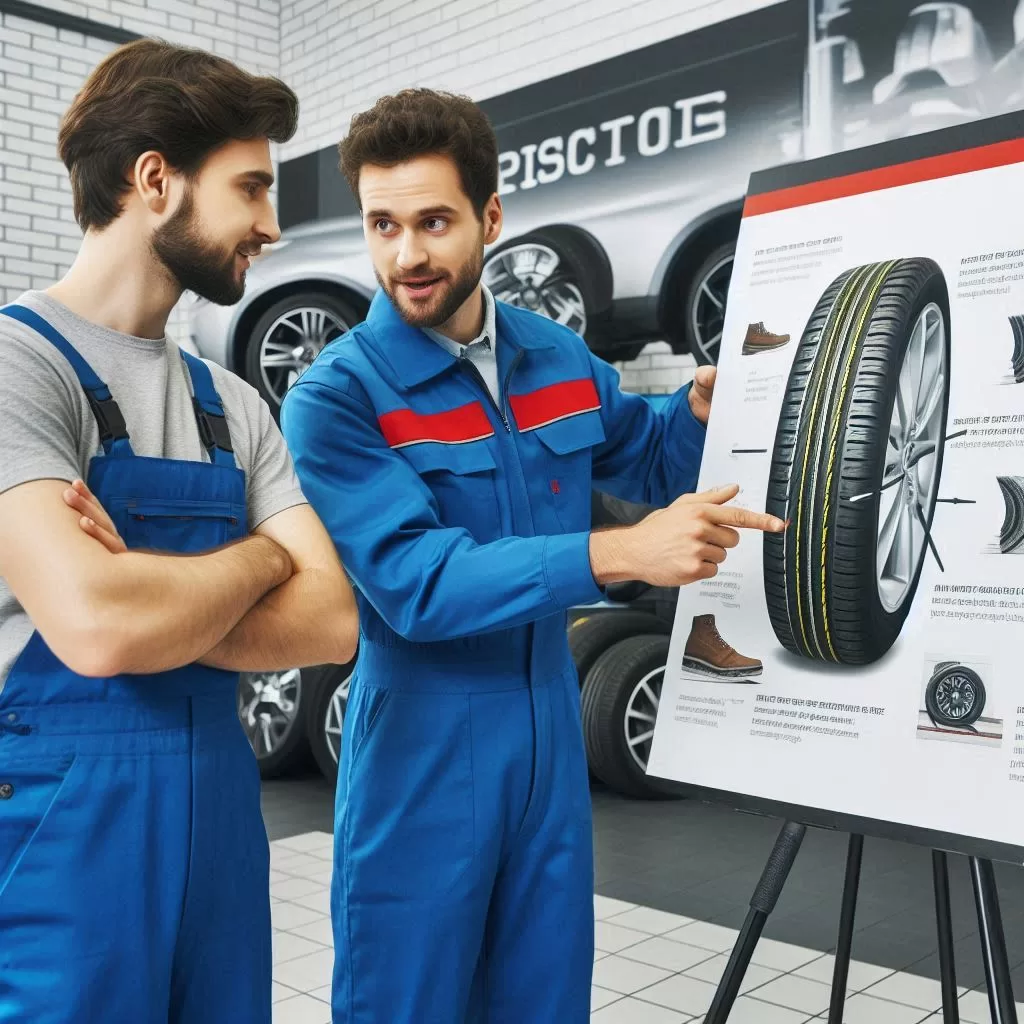
Table of Contents
Introduction
Definition of Tire Rotation and Alignment
Tire rotation and alignment are essential maintenance tasks for vehicle longevity and safety. Tire rotation involves changing the position of the tires on the vehicle, while tire alignment refers to adjusting the angles of the wheels to the car manufacturer’s specifications.
Importance of Regular Maintenance
Regular tire rotation and alignment are crucial for ensuring even tire wear, optimal vehicle performance, and safety on the road. Neglecting these tasks can lead to uneven tire wear, reduced fuel efficiency, and increased risk of accidents.
Overview of Benefits
Proper tire maintenance offers numerous benefits, including improved vehicle handling, enhanced safety, better fuel efficiency, and prolonged tire and vehicle lifespan.
Tire Rotation
What is Tire Rotation?
Definition
Tire rotation is the process of moving tires from one position on the vehicle to another, such as swapping the front tires with the rear tires.
Common Methods
Common tire rotation patterns include front-to-back, side-to-side, and cross-pattern rotations. The chosen method depends on the vehicle type and tire design.
Importance of Tire Rotation
Even Tire Wear
Rotating tires ensures that they wear evenly, as tires in different positions experience varying levels of stress and wear.
Extended Tire Life
Regular tire rotation can significantly extend the lifespan of your tires, saving you money in the long run.
Frequency of Tire Rotation
Manufacturer Recommendations
Most manufacturers recommend rotating tires every 5,000 to 8,000 miles, but it’s best to consult your vehicle’s manual for specific guidelines.
Driving Conditions Impact
Harsh driving conditions, such as off-roading or frequent stop-and-go traffic, may necessitate more frequent rotations.
Signs You Need Tire Rotation
Uneven Tread Wear
Visible uneven wear patterns on tire treads indicate the need for rotation.
Vibrations While Driving
Experiencing vibrations or a rough ride can signal uneven tire wear and the need for rotation.
Tire Alignment
What is Tire Alignment?
Definition
Tire alignment involves adjusting the angles of the wheels so that they are perpendicular to the ground and parallel to each other.
Key Components
Key components of tire alignment include camber, caster, and toe, which influence tire wear and vehicle handling.
Importance of Tire Alignment
Vehicle Stability
Proper alignment ensures vehicle stability, improving handling and safety.
Fuel Efficiency
Aligned tires reduce rolling resistance, enhancing fuel efficiency and reducing fuel costs.
Types of Tire Alignment
Front-End Alignment
Front-end alignment adjusts the angles of the front wheels and is suitable for vehicles with a solid rear axle.
Four-Wheel Alignment
Four-wheel alignment adjusts all four wheels, typically for vehicles with independent rear suspension.
Frequency of Tire Alignment
When to Check Alignment
Alignment should be checked annually or whenever you experience symptoms of misalignment.
Factors Affecting Alignment
Factors such as hitting potholes, curb impacts, and worn suspension components can affect alignment.
Signs You Need Tire Alignment
Vehicle Pulling to One Side
If your vehicle pulls to one side while driving, it may need an alignment.
Uneven Tire Wear
Uneven or rapid tire wear can indicate misalignment.
Combined Benefits
Improved Safety
Regular tire rotation and alignment enhance vehicle stability and handling, reducing the risk of accidents.
Enhanced Driving Comfort
Properly maintained tires ensure a smoother, more comfortable ride.
Better Fuel Economy
Aligned and evenly worn tires reduce rolling resistance, improving fuel efficiency.
Cost Savings
Regular maintenance prevents premature tire wear and costly repairs, leading to significant cost savings.
Prolonged Vehicle Lifespan
Proper tire care contributes to the overall longevity of your vehicle.

How to Perform Tire Rotation and Alignment
DIY Methods
Tools Needed
Basic tools for tire rotation include a jack, lug wrench, and torque wrench.
Step-by-Step Guide
- Loosen the lug nuts on all wheels.
- Lift the vehicle with a jack.
- Remove the tires and rotate them according to your pattern.
- Reinstall the tires and tighten the lug nuts.
Professional Services
What to Expect
Professional services offer precise alignment using specialized equipment, ensuring accurate adjustments.
Choosing a Service Provider
Select a reputable service provider with certified technicians and positive reviews.
Conclusion
Summary of Key Points
Regular tire rotation and alignment are essential for even tire wear, optimal performance, and safety. These maintenance tasks improve fuel efficiency, enhance driving comfort, and extend tire and vehicle lifespan.
Call to Action for Regular Maintenance
Ensure your vehicle receives regular tire rotation and alignment to enjoy the full benefits and maintain safety on the road.
Final Thoughts
Investing time in tire maintenance not only saves money in the long run but also ensures a safer, more comfortable driving experience. Prioritize tire care as part of your vehicle maintenance routine.
FAQs
1: How Often Should Tires Be Rotated?
Tires should be rotated every 5,000 to 8,000 miles, or as recommended by your vehicle’s manufacturer.
2: Can I Perform Tire Rotation and Alignment Myself?
While tire rotation can be done at home with basic tools, alignment requires specialized equipment and is best performed by professionals.
3: What Happens If I Don’t Rotate or Align My Tires?
Neglecting tire rotation and alignment can lead to uneven tire wear, poor vehicle handling, reduced fuel efficiency, and increased risk of accidents.
4: How Much Does Tire Rotation and Alignment Cost?
The cost varies, but tire rotation typically ranges from $20 to $50, while alignment can cost between $75 and $100.
5: What Are the Best Practices for Maintaining Tires?
Regularly check tire pressure, rotate tires, and ensure proper alignment. Inspect tires for wear and damage, and replace them when necessary.


